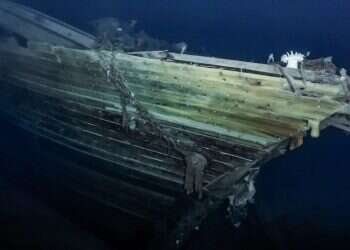A new excavation in Jerusalem has unearthed a treasure trove of artifacts from the Second Temple period, offering a glimpse into the city's vibrant past and its eventual decline. The Israel Antiquities Authority, with funding from the City of David, is conducting the dig in a drainage channel that once ran beneath Jerusalem's main street.
Ayala Zilberstein, excavation director for the Israel Antiquities Authority, explained the significance of the find, "Small finds tell us a big story, from Jerusalem's heyday of prosperity and splendor when its streets bustled with life, until the city's ebbing moments during the rebellion against the Romans, and its total abandonment following the Temple and city's destruction."
The excavation has revealed a diverse array of items, including a complete glass vial, grape pips, 2,000-year-old eggshells, and ceramic lamps still bearing soot from their last use. These objects were preserved in the channel, which passed beneath the bustling markets at the foot of the Temple Mount and along the City of David.
"Into the channel's mouth were swept the detritus of the life above Jerusalem's main street; where they remained preserved between the walls just as they were at the moment of the city's destruction," Zilberstein said.
The accumulation of silt in the main drainage channel, filling it to almost half its height, indicates a gradual neglect of city maintenance. This neglect corresponds to the process of Jerusalem's destruction, according to Dr Zilberstein.
In the upper layers of soil, archaeologists discovered complete pottery lamps dated to the end of the Second Temple period, with soot still visible on their rims. These findings, along with a previously discovered Roman sword in its leather scabbard, may have belonged to rebels who sought refuge in the channel during the city's final days.
Deeper excavations revealed artifacts testifying to Jerusalem's wealth and splendor during the Second Temple period. A team led by Nissim Mizrahi uncovered complete vessels, including ceramic vials for perfume and expensive oils, as well as a remarkably well-preserved delicate glass vial.
Initial examinations of the pottery and glass assemblages, conducted by Yael Gorin-Rosen and Shulamit Terem, revealed an exceptionally rich and diverse concentration of vessel types. "Through this large variety of pots and dishes that accumulated in the drainage channel we encounter nearly the complete tableware set of Jerusalem's residents," Zilberstein explained.
The excavated dirt was sent to the Sifting Project in Emek Zurim National Park, where additional items such as coins, beads, and food remains were discovered. These findings, including grape pips, grain kernels, fish bones, and eggshells, provide insight into the ancient Jewish diet.
Laboratory tests conducted by the Israel Antiquities Authority, in collaboration with archaeologists from the Hebrew University in Jerusalem and the Weizmann Institute, aim to examine the ancient dirt from various scientific angles.
Eli Escusido, director of the Antiquities Authority, emphasized the importance of these discoveries, "In these days, when the word 'destruction' takes on more relevance than usual, there is great value and it is important to look back into our past, to remember where we came from and what we went through, to connect with our history, and thus gain a broader view of our life here in Israel."









